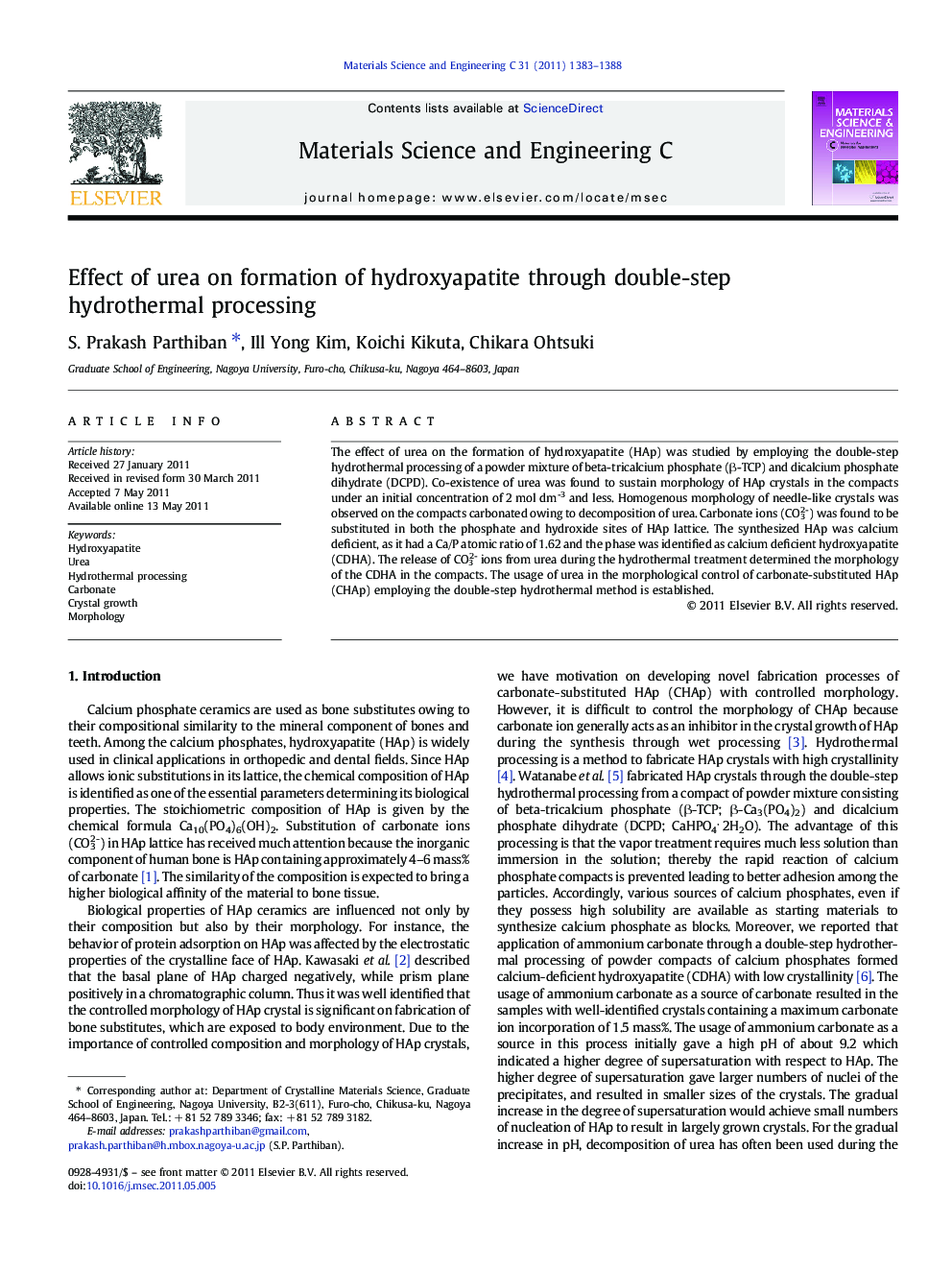| Article ID | Journal | Published Year | Pages | File Type |
|---|---|---|---|---|
| 1429724 | Materials Science and Engineering: C | 2011 | 6 Pages |
The effect of urea on the formation of hydroxyapatite (HAp) was studied by employing the double-step hydrothermal processing of a powder mixture of beta-tricalcium phosphate (β-TCP) and dicalcium phosphate dihydrate (DCPD). Co-existence of urea was found to sustain morphology of HAp crystals in the compacts under an initial concentration of 2 mol dm-3 and less. Homogenous morphology of needle-like crystals was observed on the compacts carbonated owing to decomposition of urea. Carbonate ions (CO32-) was found to be substituted in both the phosphate and hydroxide sites of HAp lattice. The synthesized HAp was calcium deficient, as it had a Ca/P atomic ratio of 1.62 and the phase was identified as calcium deficient hydroxyapatite (CDHA). The release of CO32- ions from urea during the hydrothermal treatment determined the morphology of the CDHA in the compacts. The usage of urea in the morphological control of carbonate-substituted HAp (CHAp) employing the double-step hydrothermal method is established.
► Carbonate substituted hydroxyapatite (CHAp) compacts were developed by a new method, namely double-step hydrothermal processing. ► CHAp compacts with uniform micromorphology were obtained by using urea as solvent. ► Morphology was sustained even at higher concentration of urea, which emphasized the versatility of urea. ► Homogenous morphology of CHAp compacts were obtained for higher concentration of urea. Pores were also formed at higher concentration on the CHAp compacts. ► The slow dissociation of urea under hydrothermal conditions is the reason for morphology control.
